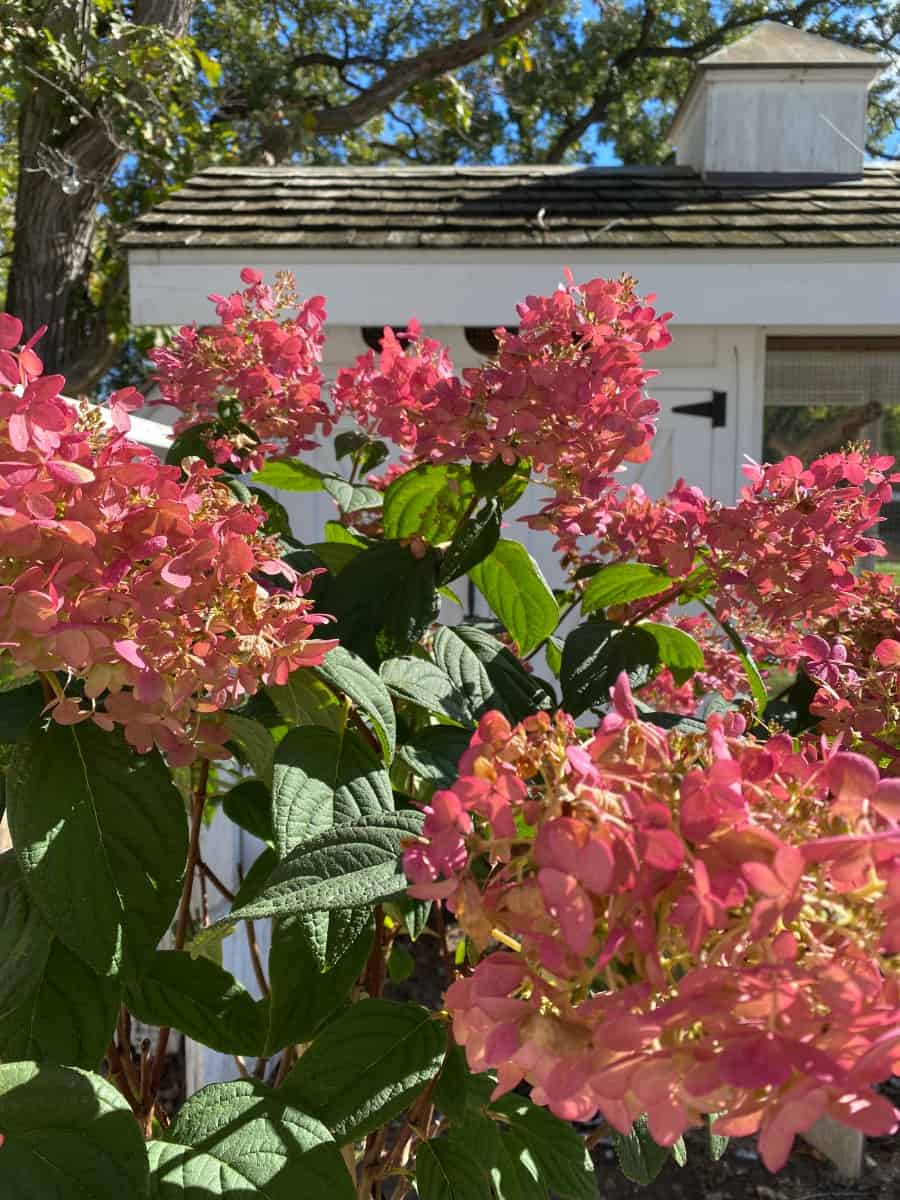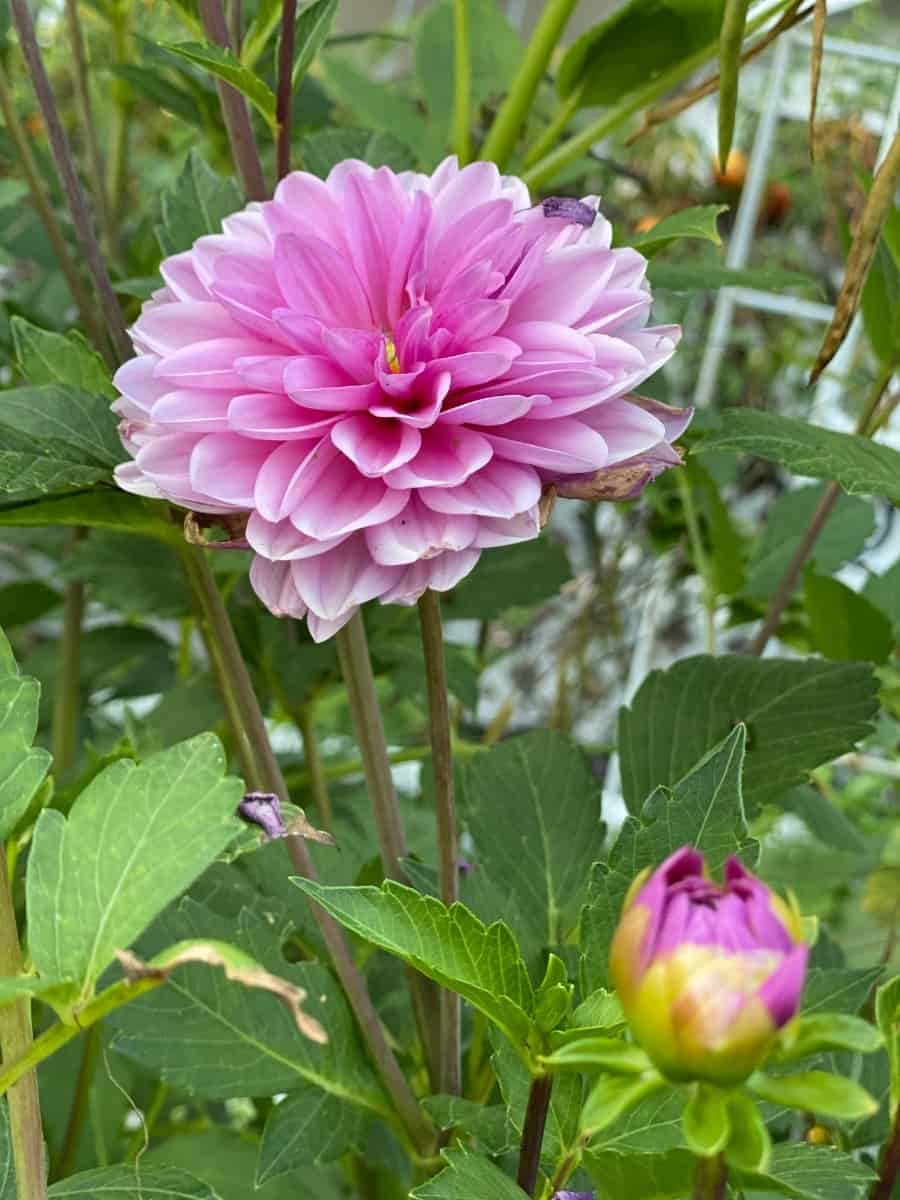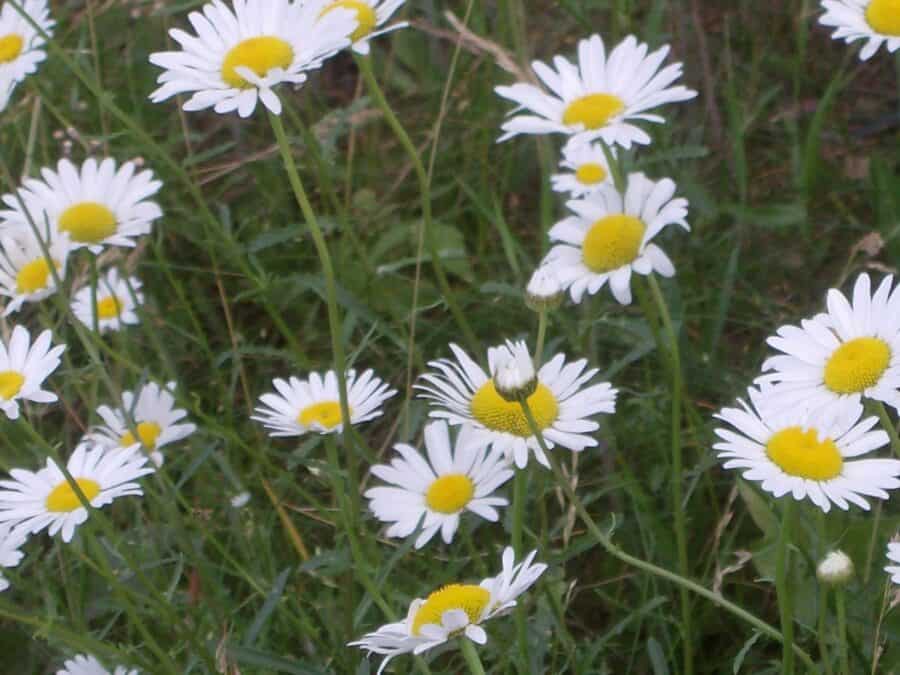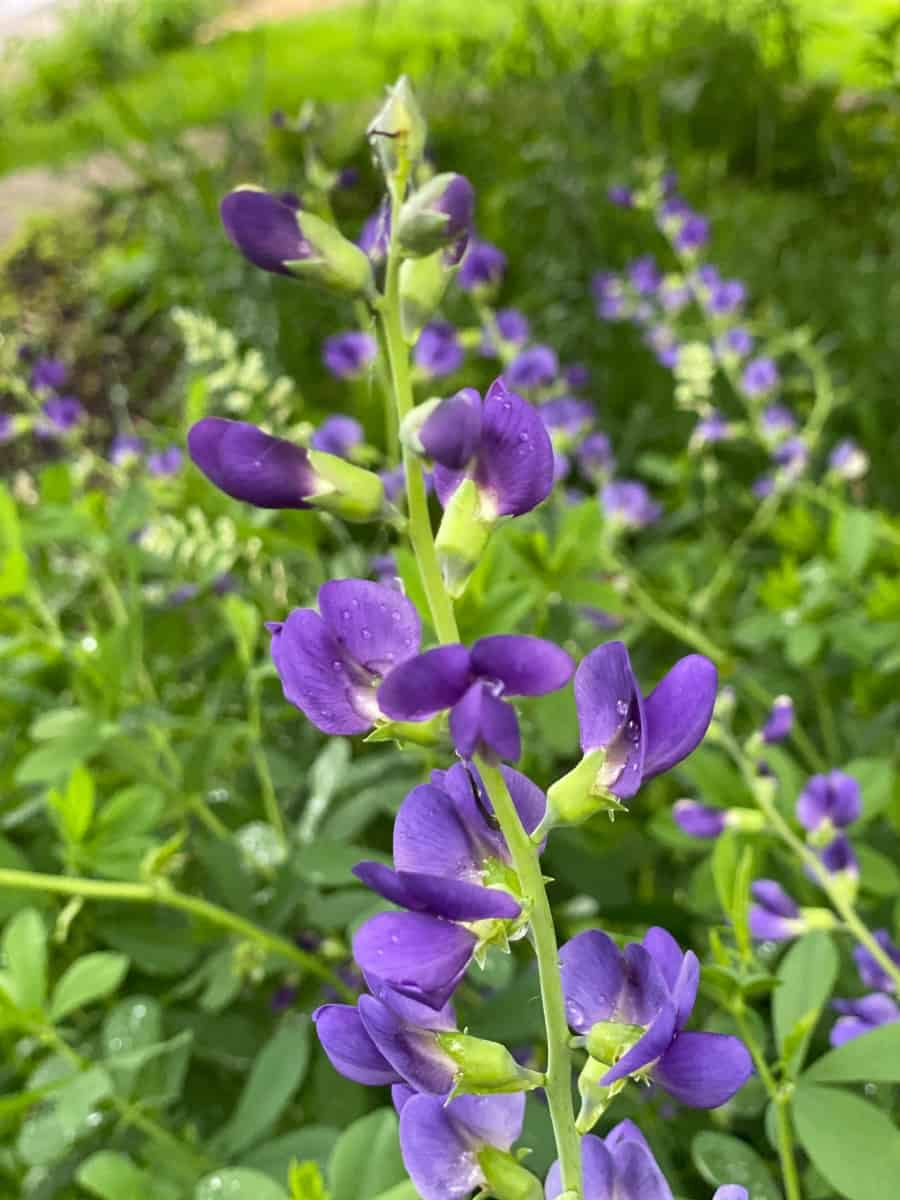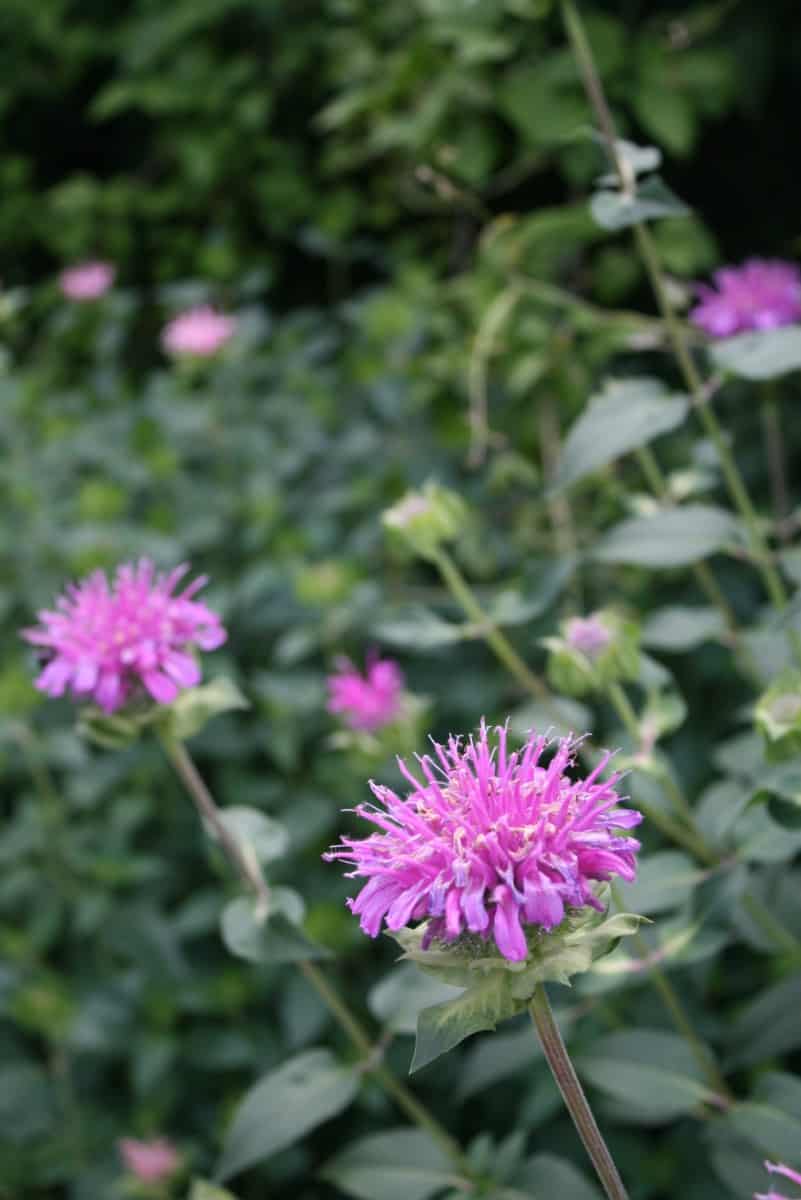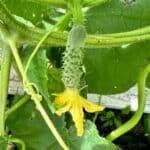What Perennials Should You Cut Back in the Fall?
We just got done with our fall clean-up at this small house and I get asked often “What perennials should you cut back in the fall? So I want to answer that for you. I also want to share with you the perennials that you should NOT cut back in the fall.
When it comes to maintaining your garden, knowing what to do in the fall is crucial. One of the most important tasks is cutting back your perennials. While some plants may need to be left alone, others require a bit of trimming to prepare for the winter. In this article, I will be discussing which perennials you should cut back in the fall.
The first thing to consider is the type of plant you have. Some perennials, such as asters and mums, should be cut back in the fall to prevent disease and promote new growth in the spring. Others, such as coneflowers and black-eyed Susans, can be left alone until spring. It’s important to know which plants fall into each category, as cutting back the wrong ones can actually harm them.
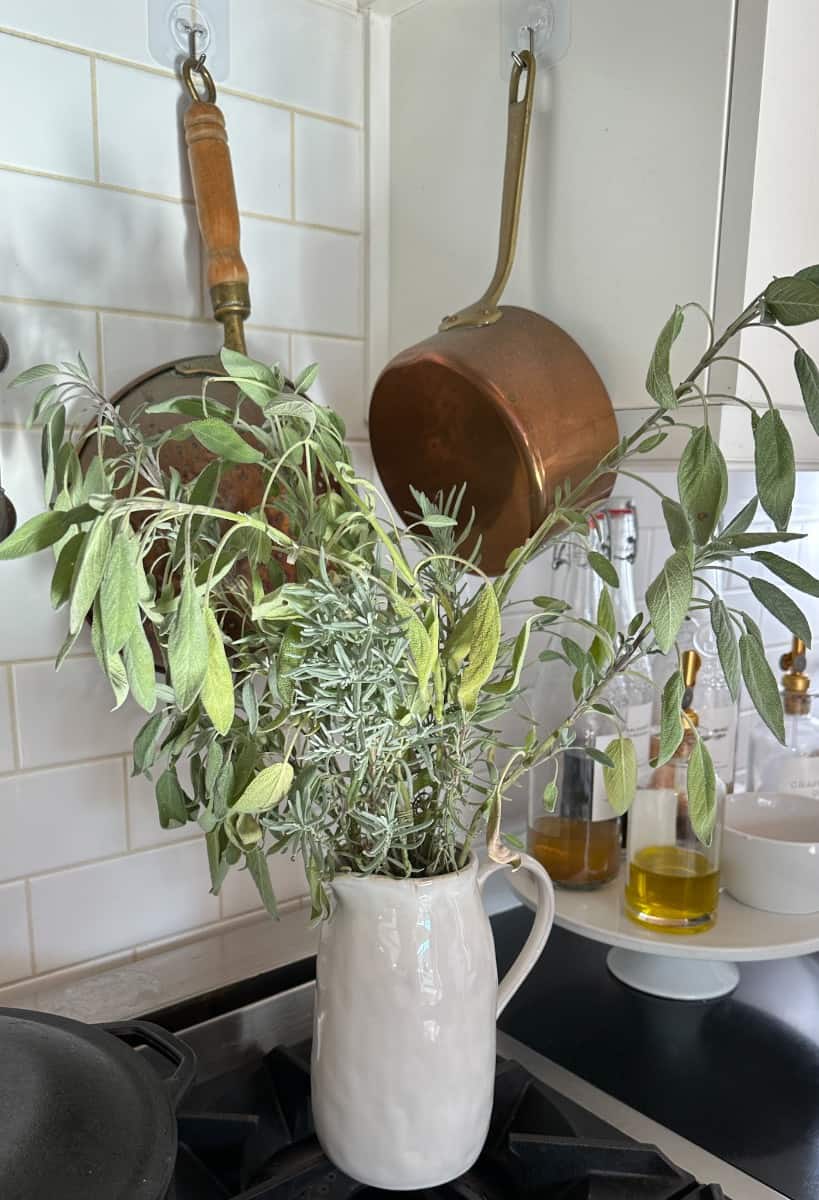
On my blog Living Large in A Small House, I may sometimes use affiliate links, which means a small commission is earned if you make a purchase via the link. The price will be the same whether you use the affiliate link or go directly to the vendor’s website using a non-affiliate link. You can find my full Disclosure Policy HERE
Understanding Perennial Plants
As a gardening enthusiast, I’ve come to appreciate the beauty and resilience of perennial plants. Unlike annuals, which need to be replanted every year, perennials come back year after year, making them a great investment for any garden.
One thing to keep in mind when caring for perennials is that they require different maintenance than annuals. While annuals can be left to die at the end of the season, perennials need to be cut back in the fall to ensure healthy growth in the spring.
Cutting back perennials is important for a few reasons. First, it helps to remove any diseased or damaged foliage, which can spread to other parts of the plant or to neighboring plants. Second, it encourages new growth and helps the plant focus its energy on producing healthy foliage and flowers.
Overall, understanding the needs of your perennial plants is key to ensuring their health and longevity. By taking the time to care for them properly, you can enjoy beautiful, healthy growth year after year.


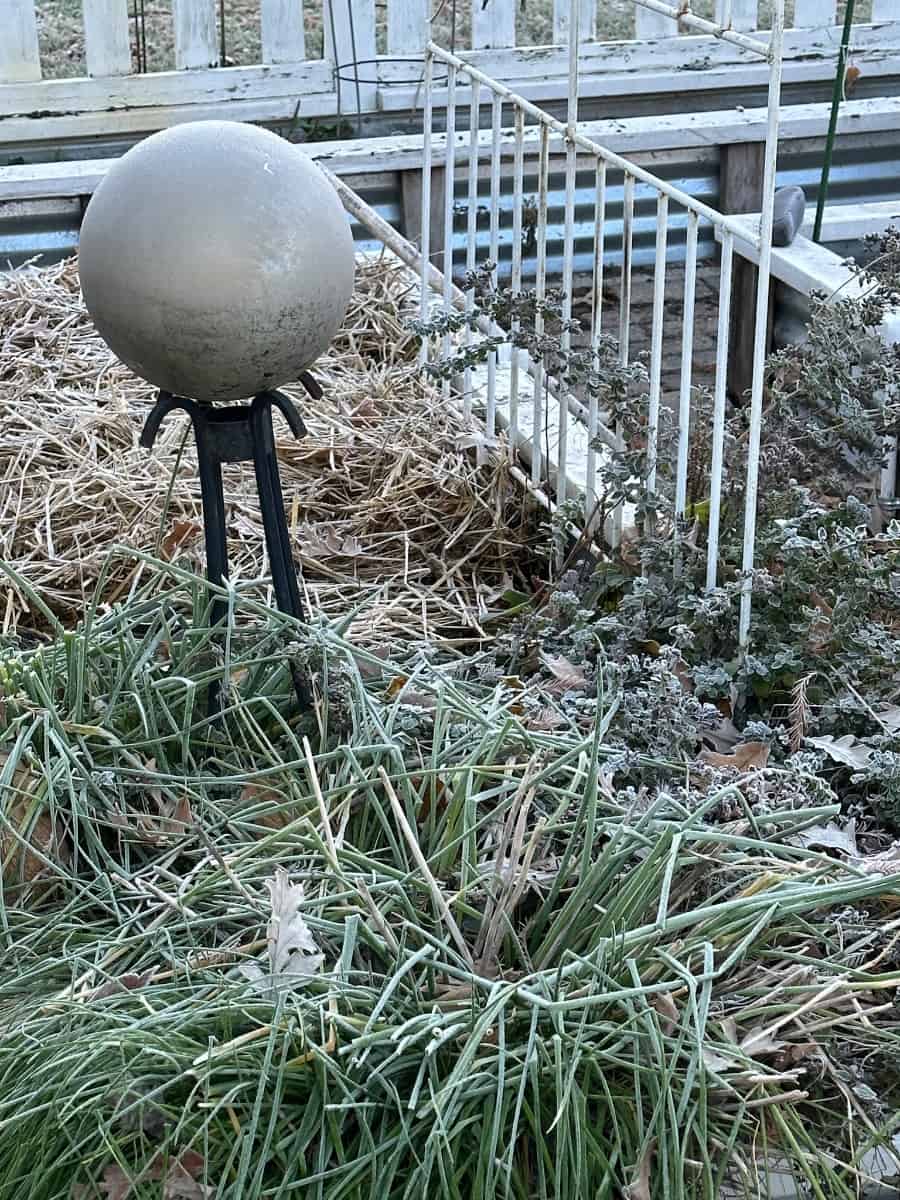

When to Cut Back Perennials
As a gardener, I always struggle with the question of when to cut back my perennials. The answer is not always straightforward and depends on several factors. Generally, the best time to cut back perennials is at the end of the growing season, which is typically after the first frost.
However, some perennials benefit from being cut back in early fall, such as those that are prone to disease or pests. By removing the foliage early, you can prevent the spread of disease and discourage pests from overwintering in the plant debris.
On the other hand, some perennials should be left standing until late winter or early spring. These plants can provide winter interest in the garden and also serve as a source of food and shelter for wildlife. Examples of perennials that should be left standing include ornamental grasses and plants with interesting seed heads.
It’s important to note that not all perennials need to be cut back. Some plants, such as evergreen perennials, should be left alone and only require light pruning to shape them. Additionally, some perennials may die back naturally and should be left alone until the following growing season.
In summary, the best time to cut back perennials is at the end of the growing season, but there are exceptions. Consider the specific needs of your plants and the overall design of your garden when deciding when to cut back your perennials.
Perennials to Cut Back
As fall approaches, it’s time to start thinking about which perennials to cut back in preparation for the winter months. Here are some common perennials that benefit from a good trim:
These are the plants that I have in my garden cut right to the ground:
- Bee Balm
- Phlox paniculata
- Balloon Flower
- Peony Bushes *
- Hardy Geraniums
- Daylilies
- Blanket Flower
- Bearded Iris and Iris Germanica
- Hostas
- Coral Bells
- Sedum – Some of my sedum I leave up for winter interest depending on where it is planted
- Red-Hot Poker
- Achillea millefolium (Yarrow)
- Ferns – My ferns just die back and the leaves are easily removed with a raking.
The debris from your peony bushes should not be put into a compost pile. They can have a fungus that the heat of your compost pile will not destroy. Throw this foliage into the garbage. Everything else can be put in your compost pile or yard recycling bin. If you don’t have a compost pile, consider starting one to help create nutrient-rich soil for next year’s garden.
I cut these plants about 4-6″ above the ground
- Garden Mums
- Globe thistle
- Joe Pye Weed
- Butterfly Weed (Milk Weed)
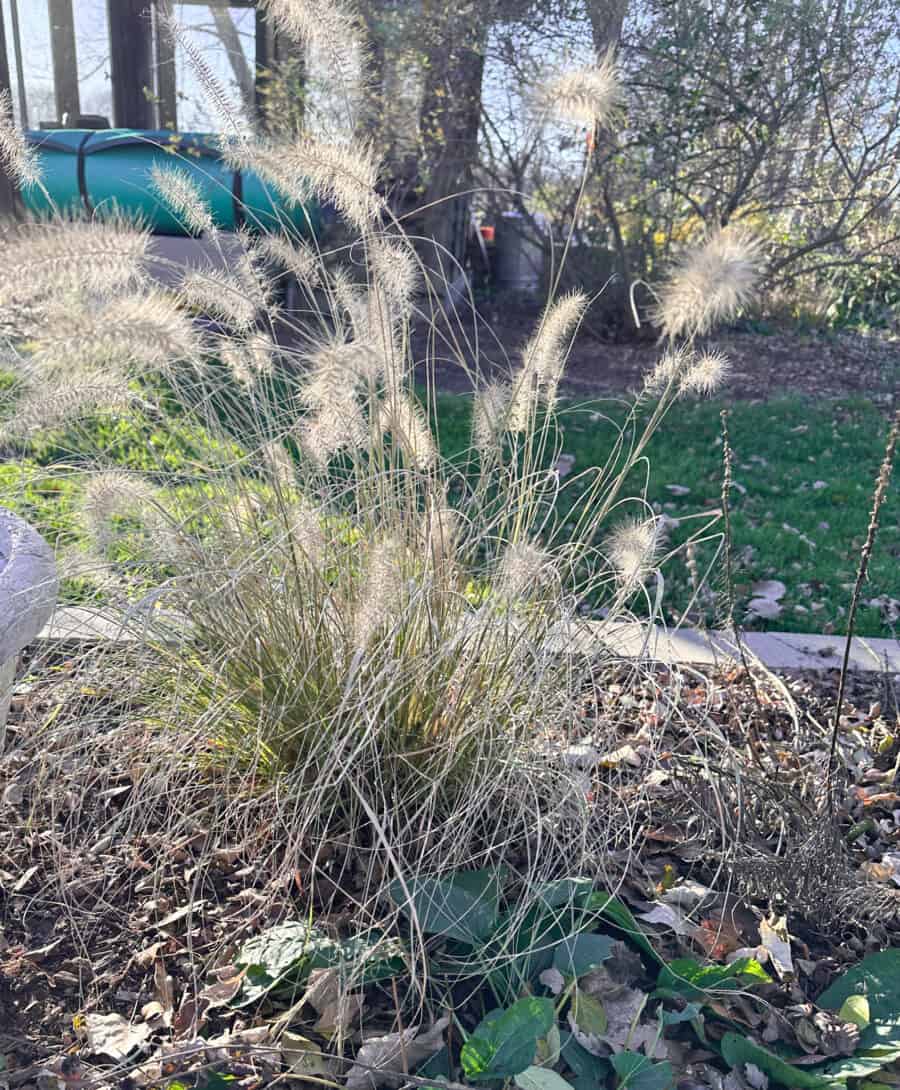
While these plants can be cut back I leave them up as I think they add interest to my garden
- Ornamental grasses: Feather Reed Grass, Zebra Grass, Bluestem, Fountain Grass
- Sedum
- Lambs Ear
These plants can be pruned in fall or spring
- Anise hyssop: You can cut this back in the fall and it grows well in the spring. If you wait until early spring to prune it, it will produce a bushier plant. It also does fine if not cut back at all
By cutting back these perennials in the fall, you’ll help ensure healthy growth and beautiful blooms next spring.
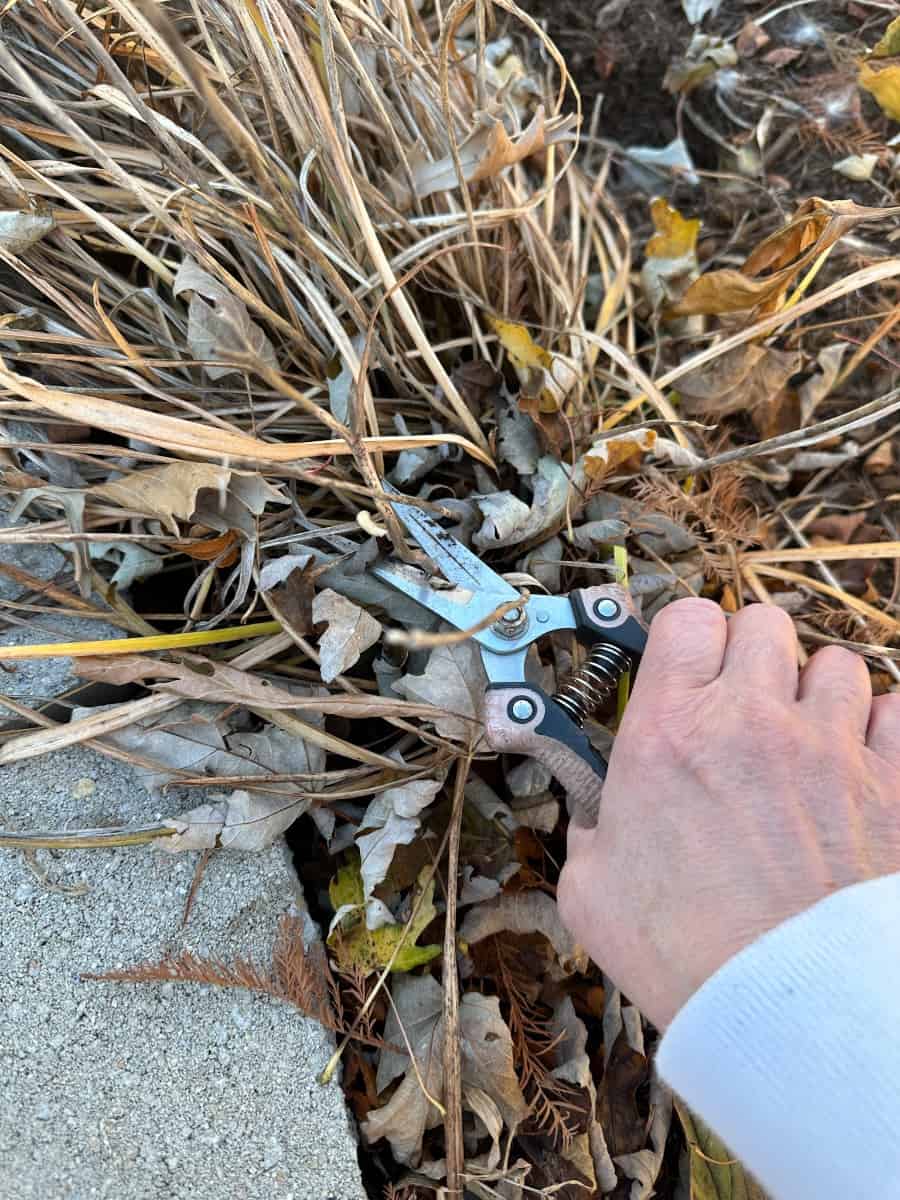
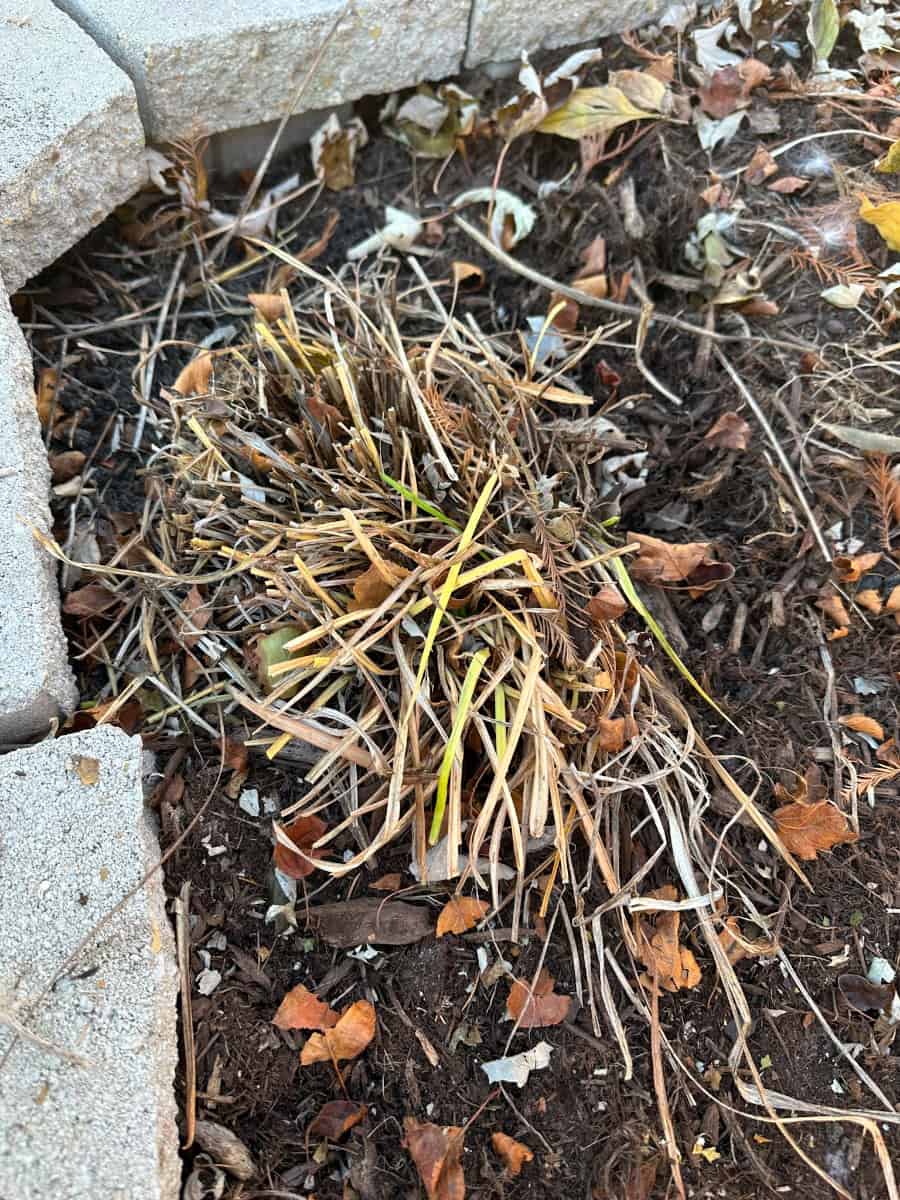
How to Cut Back Perennials
When it comes to cutting back perennials in the fall, there are a few key things to keep in mind. First, it’s important to cut back the plant at the right time. For most perennials, this means waiting until after the first frost, when the plant has gone dormant for the winter.
To cut back the plant, I usually start by cutting off any dead or diseased leaves or stems at the base of the plant. This helps to prevent any diseases or pests from overwintering in the plant and causing problems in the spring.
Next, I’ll take a clean pair of shears and make a clean cut about 2-3 inches above the ground. This helps to remove any old growth and encourages the plant to produce new growth in the spring.
If the plant has any seed heads or flowers, I’ll usually leave those on until the end of the season to provide food for birds and other wildlife. Once they’ve been pollinated and the seeds have fallen off, I’ll cut them back as well.
Overall, cutting back perennials in the fall is a simple but important task that helps to keep your garden healthy and thriving year after year.
Benefits of Cutting Back Perennials
Cutting back perennials in the fall is a good idea for many reasons. As a gardener, I find that it helps me keep my garden looking tidy and neat. Here are some other benefits of cutting back perennials:
- Healthy growth: Cutting back perennials in the fall helps them grow stronger and healthier the following year. This is because it allows them to focus their energy on root growth rather than on producing seeds or maintaining foliage that will soon die back.
- Winter interest: Some perennials, such as ornamental grasses, can provide winter interest in the garden. Cutting them back in the spring would mean missing out on their beautiful winter display.
- Beneficial insects: Many beneficial insects overwinter in the stems and foliage of perennials. By leaving them standing, you are providing a habitat for these insects and helping to support the ecosystem in your garden.
- Attractive seed heads: Some perennials, such as coneflowers and black-eyed Susans, have attractive seed heads that can provide interest in the garden throughout the winter. Leaving them standing can also provide food for birds.
- Form of height: Cutting back tall perennials can help maintain a more manageable height and prevent them from flopping over.
Overall, cutting back perennials in the fall can help promote healthy growth, provide winter interest, support beneficial insects, and maintain a tidy look in the garden.
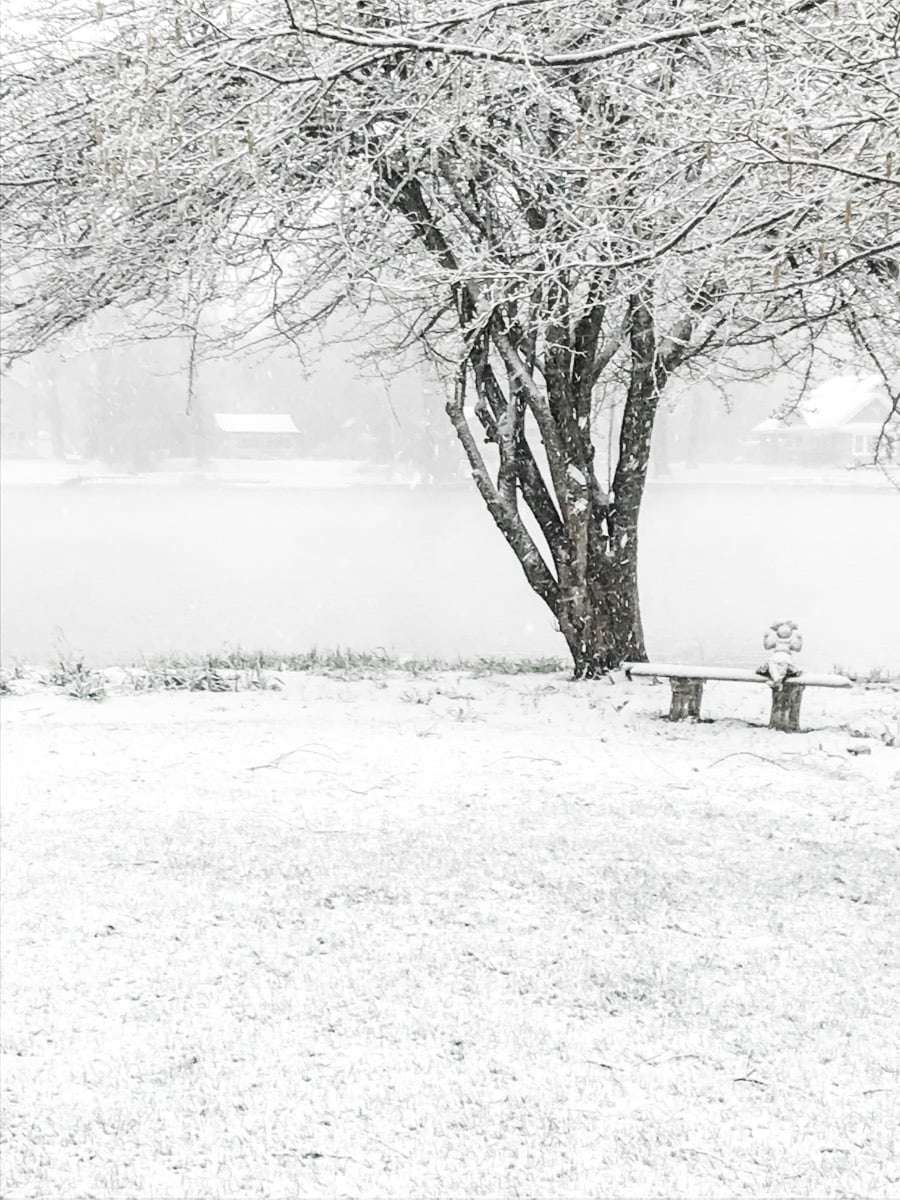

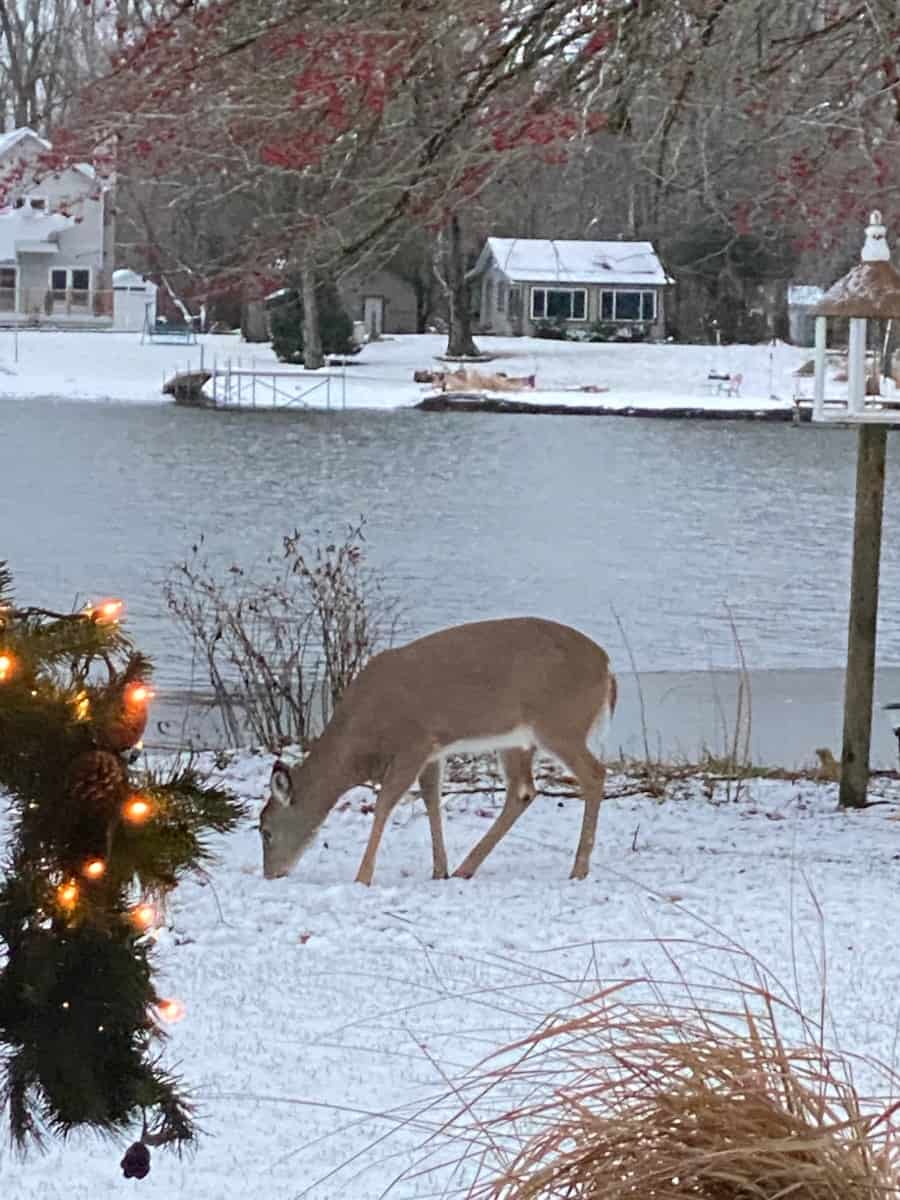
Perennials to Leave for Winter
When it comes to cutting back perennials in the fall, not all plants should be treated equally. Some perennials should be left alone to provide winter interest, food for wildlife, and protection for new shoots.
Native plants, such as purple coneflowers and black-eyed susan are excellent choices to leave for winter. The seed pods are a valuable food source for birds, and the basal leaves provide insulation for the plant’s crown. Additionally, leaving the old stems provides shelter for local wildlife. I also love to leave my grasses for winter interest. I cut them back in the early spring.
Leucanthemum x superbum, or Shasta daisy, is another perennial that should be left for winter. The ground-level foliage acts as a natural mulch, protecting the soil level from harsh winter conditions. The dried seed heads also provide a food source for birds.
Overall, leaving some perennials for winter can add to the beauty of your winter landscape while also providing valuable resources for local wildlife.
These plants should not be cut back in the fall as they either need the leaves for spring flowering or they just don’t do well in the winter after pruning.
- Hellebores (Lenten Rose)
- Hydrangeas – I trim off old flowers but I don’t trim my hydrangeas. In the spring I still cut out dead stalks but I pretty much leave them be.
- Spring Blooming Shrubs
- Evergreen Trees and Shrubs
- Flowering Fruit Trees
- Rose Shrubs – You can remove any diseased leaves and cut really long shots but you don’t want to trim your rose shrubs in the fall. Adding a layer of mulch to the base of your roses helps them winter over.
- Climbing roses – some people lay the canes on the ground and stake them. Then cover with mulch for the winter. I don’t do that with mine as it climbs against our house and I think that protects it but I do much the base with straw.
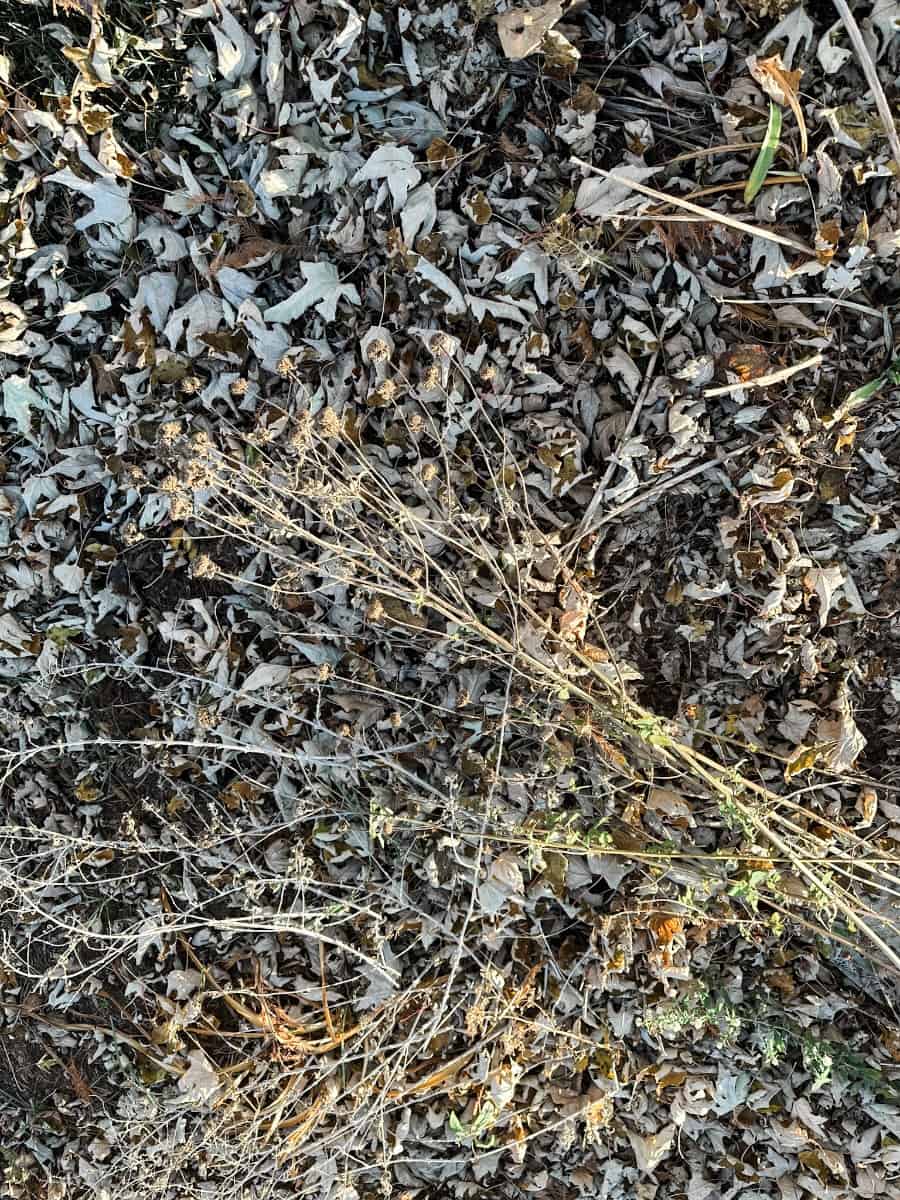
Dealing with Diseased Perennials
When it comes to dealing with diseased perennials, it’s important to take action as soon as possible. If left unchecked, fungal diseases like powdery mildew can quickly spread to other plants in your garden.
The first step to dealing with diseased perennials is to identify the problem. Look for signs of powdery mildew, like white or grayish spots on the leaves, or black spots on old growth. Dead foliage and dying foliage can also be a sign of disease.
Once you’ve identified the problem, it’s time to take action. Remove any diseased leaves or plant debris from around the plant, and cut back any dying foliage. Be sure to dispose of this material in the trash, not in your compost heap.
If the plant is severely diseased, you may need to remove it entirely to prevent the disease from spreading to other plants. Be sure to clean your tools thoroughly after working with diseased plants to prevent the spread of disease.
Overall, dealing with diseased perennials can be a challenge, but with the right approach, you can keep your garden healthy and beautiful.


End-of-Season Garden Care
As the end of the season approaches, it’s important to take care of your garden beds to ensure a healthy and productive garden in the next growing season. The perfect time to start is when the cold temperatures of early winter start to set in.
One of the first things I do is cut back any flower stems that have finished blooming. This helps to prevent the spread of disease and pests and also encourages new growth in the spring. For tender plants, I cover them with a layer of leaves or other mulch to protect them from the cold.
If you have a vegetable garden, it’s important to remove any remaining plants that are past their prime. This helps to prevent disease and pests from spreading to the next growing season. It’s also a good time to add compost or other organic matter to the soil to help replenish nutrients. I plant my garlic now so they are ready for harvest in early summer.
Garlic needs to be planted 4 – 6″ in the ground and then covered with about 6″ of straw to insulate them.
This winter I’m putting down a layer of cardboard in all of my vegetable beds to hopefully start the season without weeds and the plants that surprisingly reseed from the rest of my gardens. I’ve never tried this before and I will report how it goes in the spring.
In my cutting gardens, I dig up the tubers from my dahlias. I give them a good cleaning and trimming and prepare them for wintering over in our slightly heated shed. My friend Katherine has a great Instagram post that shows us how to properly prepare dahlia tubers for winter. You can find it at Fancy Flower Girls.
I also plant my spring flowering bulbs (tulips, crocus, daffodils, and hyacinth) for next spring flowers.
Overall, end-of-season garden care is an important part of maintaining a healthy and productive garden. By taking the time to cut back perennials, remove dead leaves and debris, and add compost or other organic matter, you can help ensure a successful growing season in the future.
Peace and Love,


Meet Me
I’m an Interior Designer, Professional Organizer, and Party Planner who lives in the suburbs of Chicago in a 1,300 sq., ft., home with my “Handy” husband, Keith.
I’m an open book about my life on my blog. Find out more about me by tapping the button below.

Thanks for Following Along
If you enjoyed this post I hope you sign up to be a friend of Living Large in A Small House! Then you won’t miss any of the inspiration that is shared with you each week! You can also follow me on Instagram, Facebook, and YouTube. I share even more inspiration on Pinterest! You can listen to me chat on my Podcast.


A great way to save this article is to save it to your Pinterest boards. You can find the pin button in the top right corner of the photo below. Also, don’t forget to follow me on Pinterest
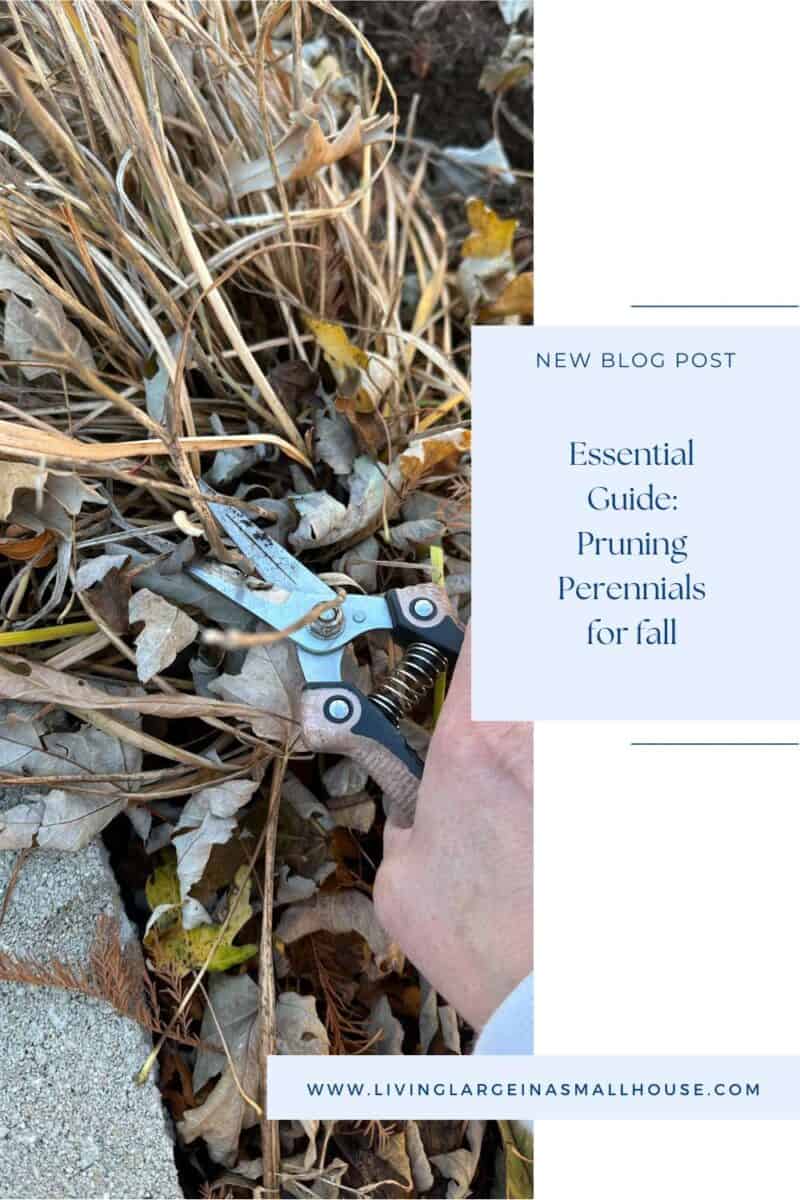



Featured



